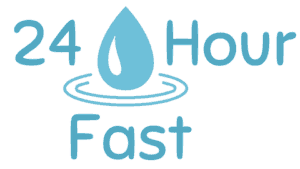Intermittent fasting focuses primarily on when to eat, which is the missing component in a lot of people’s eating habits. However, it doesn’t mean that ‘what to eat’ is not important. On the contrary, combining an optimal timing of meals with a healthy diet is exponentially powerful. But have you ever run out of ideas when it comes to cooking a healthy meal? We will look at different meal ideas and suggestions here to support your intermittent fasting benefits, especially when it comes to longer fasts like a 24-hour fast.
Best cookbooks to know about
Before starting, I want to mention the cookbooks I will reference here. They are some of the best ones in my opinion because they provide recipes for healthy and balanced meals but most importantly are easy to follow with a minimum list of ingredients.
I’m not a professional chef and have limited time and creativity when it comes to cooking. So having go-to recipes that help me create tasty and healthy meals before and after my fasts is more than essential.
Run Fast. Eat Slow. By Shalane Flanagan and Elyse Kopecky
You don’t need to be a runner to experience the amazingly simple recipes that are in this book. Those recipes will help you sustain an active lifestyle whether you are training for your next marathon or just want to live your life with maximum levels of energy. If you are looking for easy and practical recipes, this is the one to check out: Run Fast. Eat Slow.
Run Fast. Cook Fast. Eat Slow. By Shalane Flanagan and Elyse Kopecky
This is their second book. Adding the focus even more on short and simple recipes not to spend the whole day in the kitchen, it is one of my go-to cookbooks when the clock is ticking. Click on the image below to learn more about it:
Food: What the heck should I cook? By Dr. Mark Hyman
Dr. Mark Hyman is an internationally recognized leader, speaker, and advocate in the field of Functional Medicine. He teaches the concept of using food as medicine and his cookbook is an extraordinary collection of healthy recipes. If you have ever been confused about what to eat because of the contradictory food advice that keeps coming up, don’t look further, this one will clear the confusion over delicious meals to enjoy: Food: What the heck should I cook?
Love real food. By Kathryne Taylor
The title says it all, it’s about cooking whole foods. Going back to eating real food. This contains a great selection of vegetarian recipes that will nourish your body before or after a long fast. Whether you follow a vegetarian diet or not, this will give you amazing and delicious plant-based recipes.
What this article is not about
This article is not meant to be a meal plan, but rather suggestions to give you ideas and maybe boost your creativity in the kitchen. As well as highlighting the important points to keep in mind when practicing longer fasts.
Make sure you eat according to your needs, and those are aligned with the goals you are trying to achieve. Don’t overeat to compensate, but make sure you eat enough, as your body goes through long periods of time without any nutrients intake.
A lot of people combine a ketogenic diet with intermittent fasting. While the meals suggested below have a limited amount of carbohydrates, they don’t strictly follow a ketogenic diet. The key points are highlighted and explained regardless of your diet.
This is not meant to tell you which diet is best. Because it depends primarily on YOU. Your needs and your goals.
Meal ideas before a 24-hour fast
Quinoa-Stuffed Sweet Potatoes
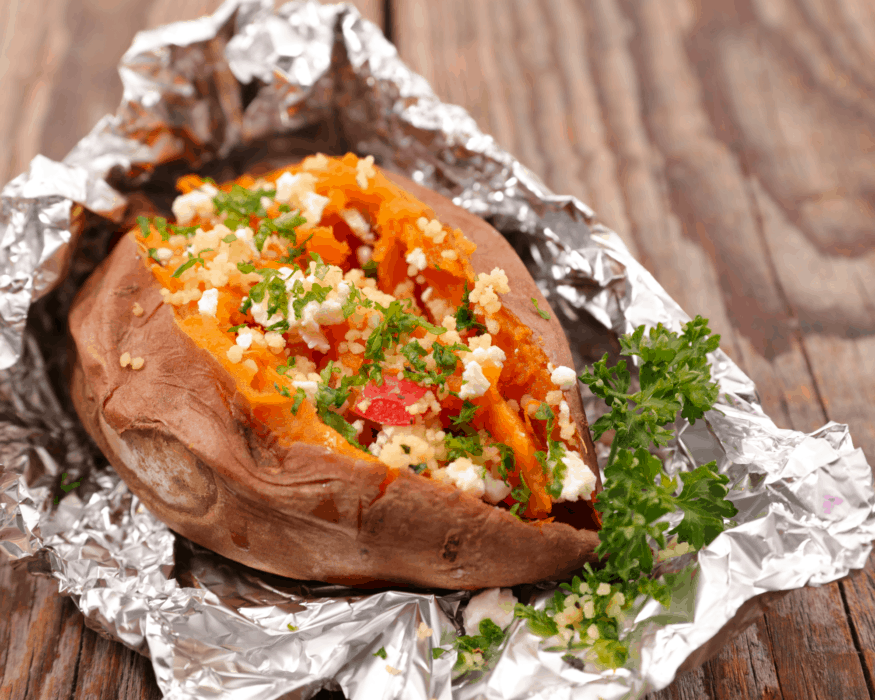
This dish comes from the Love real food cookbook. It takes a bit of preparation because the sweet potatoes need to cook around 45 minutes to 1 hour in the oven. But this can be done in advance as well.
The quinoa also needs to be cooked separately, 1 cup takes about 15 to 20 minutes to absorb the water in a saucepan.
On the side, the recipe calls for pepitas (pumpkin seeds) that you can cook a few minutes in a pan. Mix them with chickpeas, green onions, parsley, garlic, lemon juice, olive oil, and sea salt. You can mix all those ingredients in a mixing bowl and add the cooked quinoa afterward.
Before serving, add some crumbled goat cheese to the mix. Once the sweet potatoes are cooked, cut them in half and add the filling mix on top. This can be eaten on its own or along with salad greens.
Power Bowls
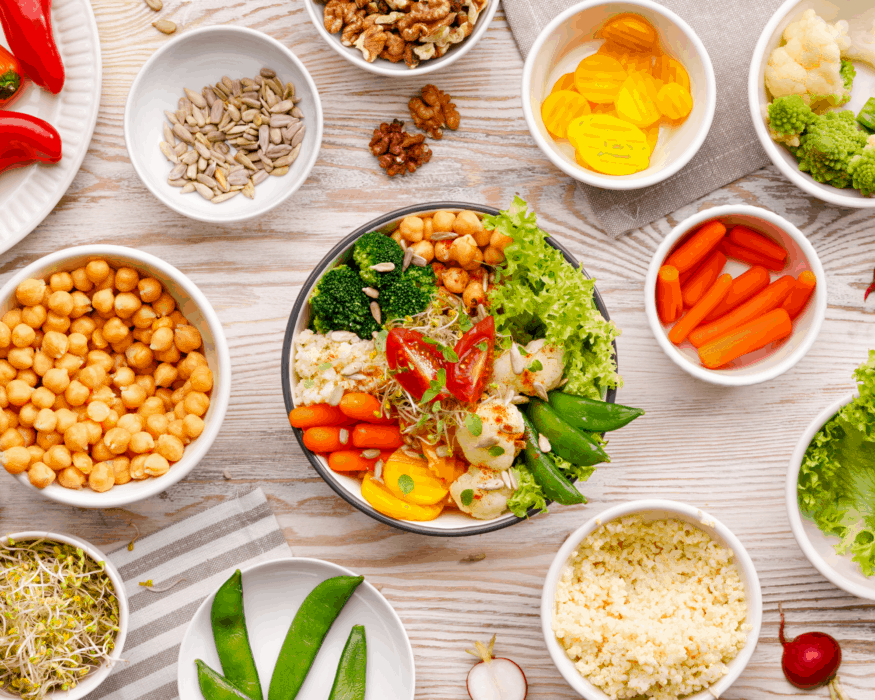
“Give an athlete a whole foods bowl, and you nourish for a day. Teach an athlete to make nourishing bowls, and you feed him for a lifetime” – from Run Fast. Cook Fast. Eat Slow.
The recipe is coming from this cookbook and is one of my favorites as it’s easy to make and gives a lot of flexibility. Those power bowls are meant to be a one-dish meal loaded with whole foods. They are composed of four main components:
- The base: it can be any grains like brown rice, quinoa, farro, but also salad greens like romaine, baby spinach, arugula, …
- The vegetables: you can add any vegetables that you like. It’s recommended in the book to aim for a colorful rainbow as it’s very intuitive to do and will cover a wide range of vitamins, minerals, and antioxidants. You can include for example cabbage slaw, cauliflower, broccoli, carrots, bok choy, greens, peppers, zucchinis, sweet potatoes, sliced avocado, … any vegetables like you like and have on hand.
- The protein: any leftover meat can be used here as well as fried eggs if you are in a time crunch or tofu, tempeh, chickpeas, or black beans.
- The sauce: You can choose any sauce that you like to add flavor to your bowl. It’s recommended to make it yourself as it won’t have any hidden chemicals added, but organic store-bought sauces minimally processed can be an option if in a time crunch. Making your own doesn’t necessarily take much time. Guacamole, for example, can be made in a few minutes by mixing avocado, sea salt, and lime juice.
You can see how you can create an infinite number of power bowls combos depending on what you have on hand and what you like.
Key points

The common points of the recipes suggested above are that they are full of nutrients and vitamins.
Contrary to what we can sometimes see, it is not necessary to load on carbs before a fast. The key here is to eat as you typically do. Making sure that you give your body a nourishing meal to provide enough energy, vitamins, and nutrients, and not just empty calories.
Can you eat anything during a 24-hour fast?
By definition, when fasting we don’t eat any significant amount of food. Does that mean that we should only drink water? It depends. Water-only fast can be an option if you are able to sustain 24-hours with just water. If that’s the case, then there is no reason to change that.
On the other hand, if you like to have a bit more flexibility or if you are just starting with longer fasts, it may be easier to add variety during your fast along with water.
The most important is to understand what breaking a fast means and what actually breaks a fast depending on your situation. You can find more information here in this article.
Black coffee and tea are commonly used during a fast, as they don’t trigger an insulin response and hardly contain any calories. Feel free to drink those if it helps you during your fast.
Sparkling Emerald Tea
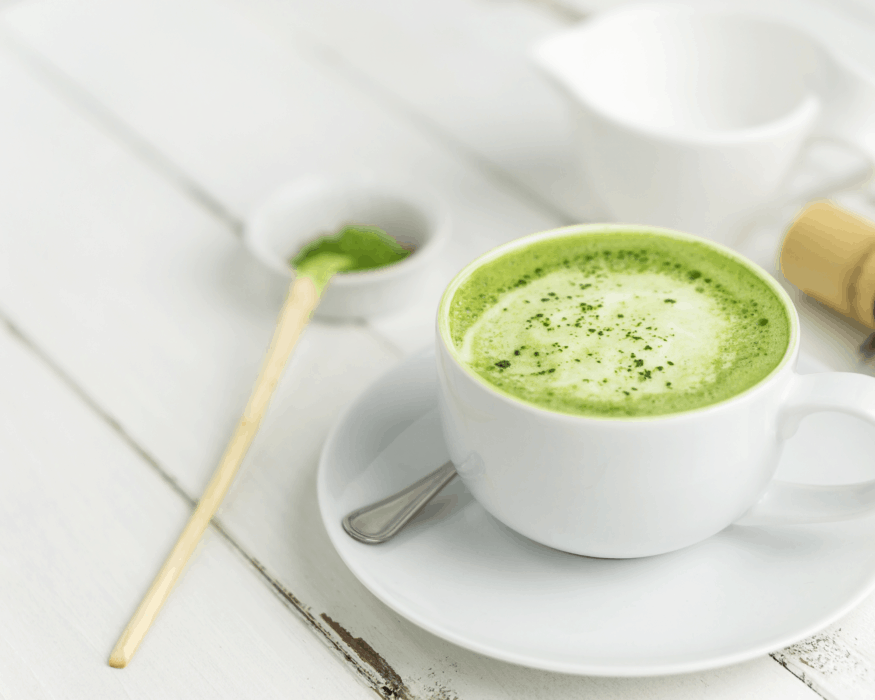
For this tea (recipe can be found in Dr. Mark Hyman’s cookbook: What the heck should I cook), you will need peppermint tea bags to infuse in hot water. Add lime juice, a bit of apple cider vinegar, 1/2 a teaspoon of liquid chlorophyll, and sparkling mineral water.
This will give you a refreshing boost. Apple cider vinegar and peppermint are also known to be good appetite suppressants, which makes this tea a perfect option to drink during your fast.
If you want to learn more about other appetite suppressants that can help you manage better those hunger pangs, all the information is detailed here.
Bone Broth
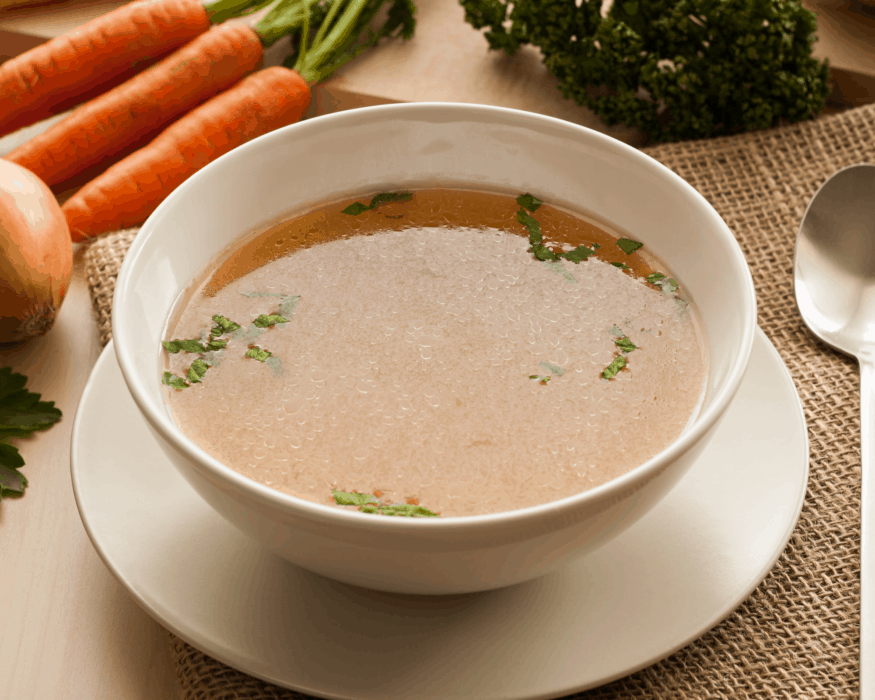
This one is controversial, some people will say it breaks your fast. Dr. Jason Fung on the other hand is an advocate of using it during your fast. It really depends on your fasting goals and how easy for you it is to sustain a 24-hour fast. If it helps you, feel free to drink it.
Bone broth is beneficial because it is rich in electrolytes, which we tend to be depleted of, during a fast. If you feel very tired during your fast, consider experimenting with 1/2 cup to 1 cup of bone broth. See if it helps you feel better and sustain your fast longer. In case you experience nausea, confusion, or extreme fatigue, know the signs and don’t force it, it is always okay to stop your fast and try again later.
You can buy organic bone broth in-store, but it’s very easy to make yourself. Do it in advance as it takes a long time to cook (without you doing anything), but it’s extremely simple.
- Chicken bones (2 to 3 lbs) in a large stockpot or slow cooker. Add water to cover and apple cider vinegar, let stand for about 30 minutes.
- Add onions, carrots, celery, black peppercorns, and bay leaf to the pot. Bring to a boil, then reduce the heat to low and simmer, covered, for 8 to 24 hours (for maximum nutrient extraction).
- Once done, strain the broth through a large mesh. Add sea salt to taste and it’s ready.
Key points

Do what works for you to finish your fast feeling good. Depending on where you are in your journey, it may mean bone broth, coffee, and tea, or water-only fast. There is no perfect solution here, just the one that will help you sustain your fast and achieve your goals in the process.
Meal ideas to break a 24-hour fast
Breaking a fast probably seems like the easiest part, especially after going through a 24-hour fast, but there are a few things to keep in mind when it comes to refeeding.
Your body experienced a long period without any significant food intake and you don’t want to suddenly overeat. The best way is to go slow, eat a bit, see how you feel, and eat more later on.
You can find all the information about how to break a 24-hour fast safely here. My favorite way of breaking a fast is eating an avocado with a pinch of sea salt on top. It’s very light, refreshing and is the perfect amount of food right after a long fast.
Some people don’t feel like eating solid food right away. If that’s your case, a smoothie with vegetables is perfect.
Can’t Beet Me Smoothie
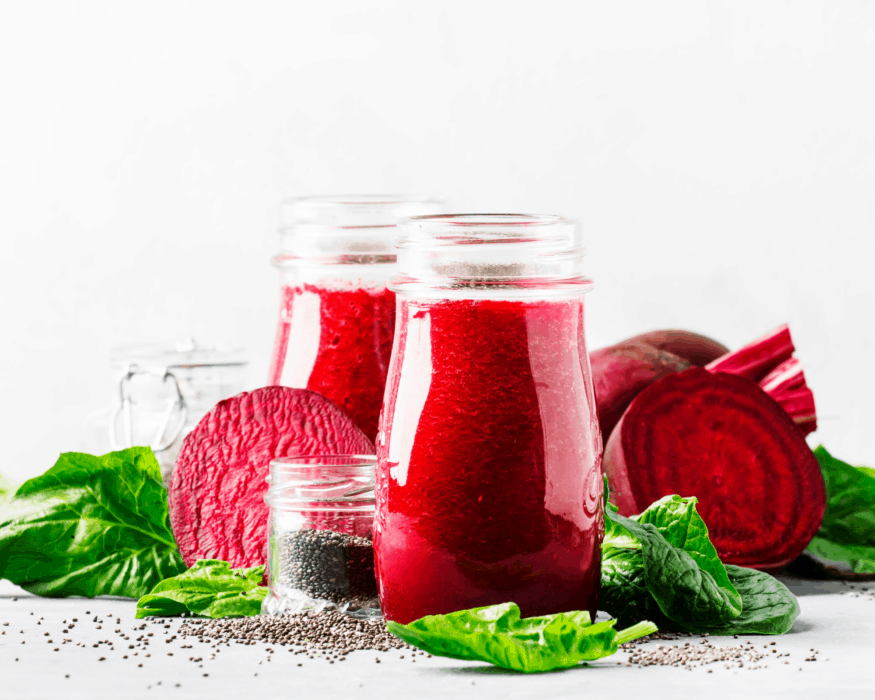
This beet smoothie from Run fast. Eat slow cookbook. is extremely simple to make. The coconut water will replenish your electrolytes and the beets and fruits are a great way to have a dose of vitamins in right away.
For this smoothie, you will need one beet (uncooked is fine if you have a high-speed blender), blueberries, banana, dairy-free milk, coconut water, and a bit of fresh ginger if desired. Blend everything on high speed for a few minutes.
Any other smoothie loaded with vegetables can be made as well. The goal here is to give your body some high-quality nutrients without overloading it with too much food at once.
Chicken and Apple Salad
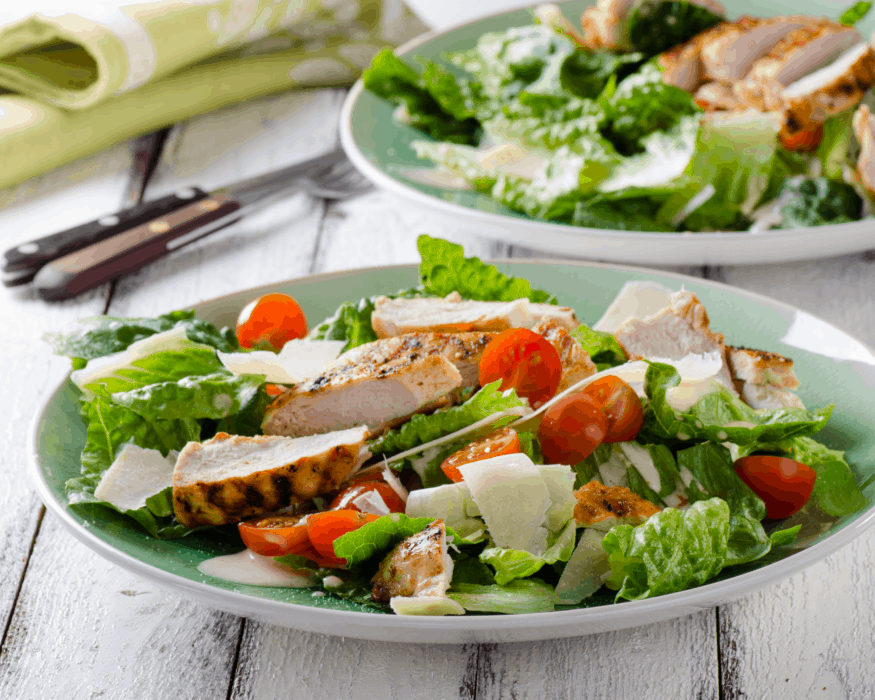
If you feel like eating solid food right away, a mixed salad is light enough and is nutrient-dense. This chicken salad from What the heck should I cook cookbook is great for this purpose. It’s very quick to make so perfect when it’s time to break your fast.
You will need chicken breasts, Dr. Hyman recommends pasture-raised chicken breasts. Cook the chicken with avocado oil in a skillet for about 5 minutes each side.
Cut the cooked chicken in slices, add some parsley, rosemary, apple (Fuji apple is what is in the recipe but you can use any type you like), red onion, mixed salad greens, extra-virgin olive oil, and lemon juice.
Chili
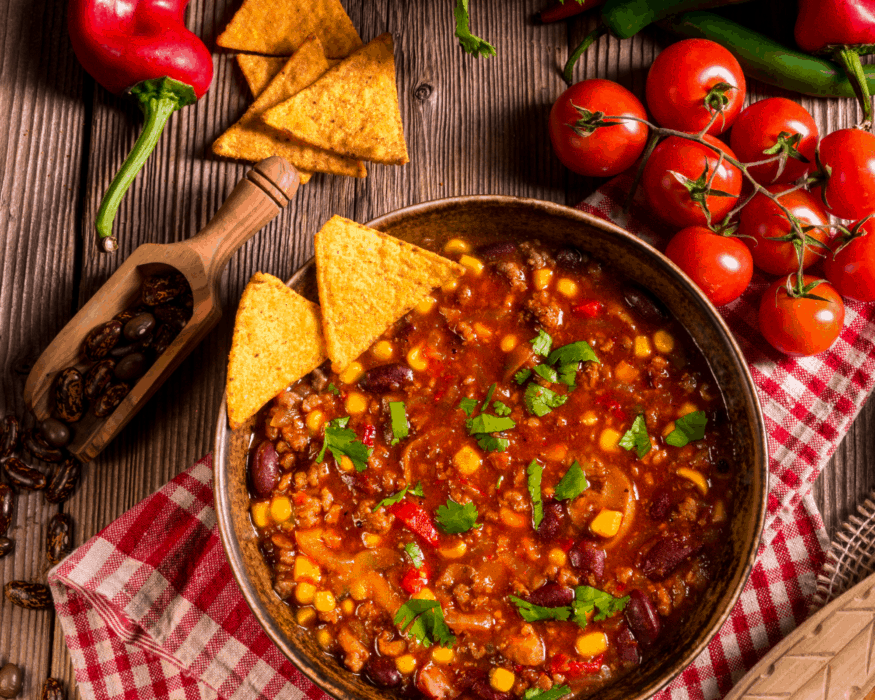
After your smoothie or salad, it’s best to wait around an hour before eating a full meal. I recommend preparing this in advance as you may not want to be cooking for too long after a fast, but it’s up to you.
This chili is a complete and nourishing meal after a fast. The recipe is from Run Fast. Cook Fast. Eat Slow, as a Bison chili but you can sub any other meat like ground beef, ground turkey, or crumble tempeh if you prefer.
It can be cooked in a large pot or in the Instant Pot if you have one. The first step is to sauté the meat in extra-virgin olive oil for about 5 minutes. Add bell peppers, yellow onion, chili powder, salt and sauté for 5 more minutes.
Then add 2 cans of beans (any type, like black beans, pinto beans, or even chickpeas), 1 can of tomato sauce, 1 can of diced tomatoes, ground cinnamon, and cayenne pepper if desired. Bring to a boil then reduce the heat to low and cover for 30 minutes.
This can be served with toppings like avocado, sour cream, grated cheese, or scallions. It can also be served on top of some brown rice or any other grain you enjoy.
Key points

When breaking a fast, the most important point is to go slow and not to overeat with large quantities of foods. It’s better to take a step-by-step approach with first a beverage like a smoothie or a light salad. After an hour or so, you can eat a regular meal.
Focus on nutrient-dense foods that will replenish your body with everything it needs. If you can, it’s best to prioritize whole foods rather than processed foods. The key here is to plan in advance and prepare your meal the day before for example. That way, when it’s time to break your fast, you will just have to focus on eating, not cooking.
Conclusion
As stated above, the meals described here are just suggestions to give you ideas and most importantly, an understanding of the key points to focus on, at each step of your fast.
“The best diet is the one that works for you”, stated James Clear. If you combine a healthy and balanced diet that works for you with a fasting practice that is sustainable, you will experience powerful benefits.
The information we provide at 24hourfast.com is not intended to replace a consultation with a qualified medical professional. By interacting with this site, you agree to our disclaimer.
